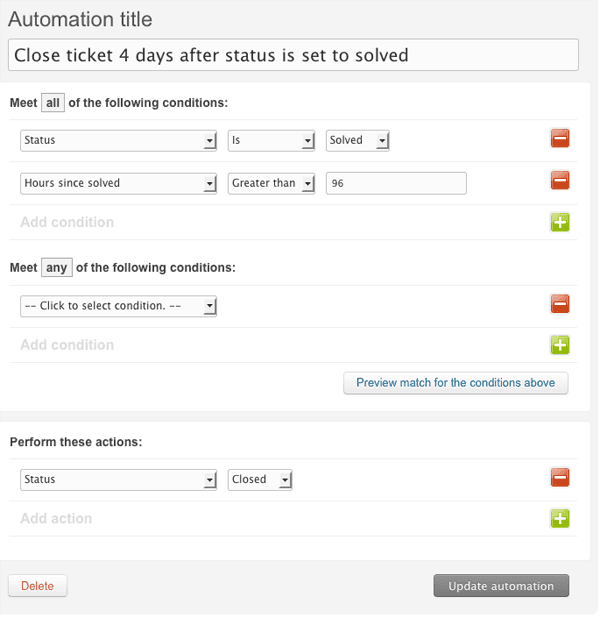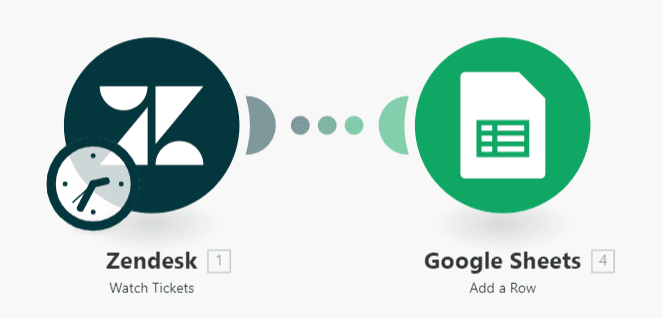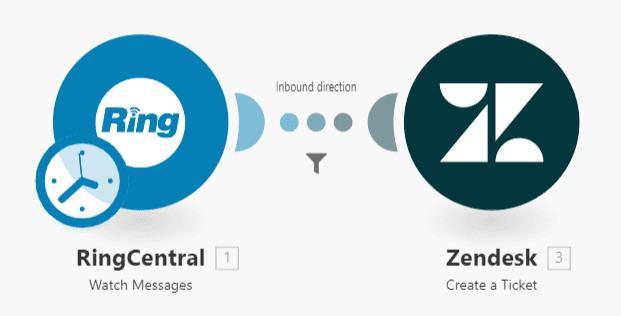May 22, 2020 | 4 minutes
Zendesk Automation: 5 Make Templates to Get You Started
Zendesk is a great customer engagement tool, but let’s face it: when it comes to automation, things can get complicated fast.

Zendesk is a great customer engagement tool, but let’s face it: when it comes to their native automation system, things can get complicated fast.
In this line, there are three aspects of them that caught my attention right away:
Documentation: thorough, but also lengthy, and sometimes difficult to navigate
User interface: by relying on fields and drop-downs, it is hard to visualize data flows
Error handling: virtually non-existing. If your automation does not work, you are bound for reading more documentation and trying to find out what happened
But hey, I get it.
Zendesk is about customer satisfaction, just like Make is about workflow automation and app integrations.
Having automation features is nice, but I doubt anyone subscribes to Zendesk because of them. I can’t be 100% sure, but I’m inclined to believe that most companies get Zendesk because of its most salient qualities, such as:
User-friendly dashboards
Strong analytics and reporting capabilities
Scalability
This said, there is room to start automating without getting muddled into complex features. Here’s where Make steps in.
Flattening the learning curve
Make templates serve a dual purpose. First, they are a good introduction to how Make works and how app modules behave.
Second, templates can be used to produce results right away, within minutes.
As it turns out, every Make template is set up and tested before getting published, saving you a good deal of trial-and-error time.
This makes it easy to start automating tasks further down the road, turning the learning process into a much more intuitive experience.
Now, let’s take a dive into five simple Zendesk templates you can implement right away.
Note: if you want to test the templates in real-time as you read this, I recommend you sign up for an Make account. The free version provides access to all the features and modules (not just Zendesk’s!).
1. Add new Zendesk tickets to Google Sheets
This integration will automatically send incoming Zendesk tickets (and the information contained in them) to a Google Sheets spreadsheet. There are many cases where this can prove useful. One example is new customer service reps.
Zendesk pricing starts at $5/month per user. This might not strike as much, but customer support teams can expand fast, and so can costs.
In this context, it is not rare that managers want to test new reps before fully onboarding them. By deploying this solution, managers can effectively give new reps access to Zendesk tickets and see how they perform before advancing the onboarding process.
Link to template: Zendesk - Google Sheets integration
2. Create Zendesk tickets from Google Forms responses
Google Forms are incredibly flexible, and businesses use them for many tasks, including:
Customer registration
Feedback collection
Satisfaction surveys
With the help of Make, the responses can be transformed into Zendesk tickets and forwarded to the customer satisfaction team, who in turn will be able to work on them from the get-go.
Link to template: Google Forms - Zendesk integration
3. Add new Zendesk users to a MailChimp list
Updating MailChimp lists with new Zendesk contacts is a great way to build high-quality lead lists. However, it often happens that nobody’s got time for that.
The good news is that you can automate the whole thing and forget about it. Taking into account that acquiring leads is hard and costly, this integration is nothing but a smart move for all kinds of organizations.
Always remember, data is like oil: if you keep it underground and don’t process it, it ain’t worth much.
Link to template: Zendesk - MailChimp integration
4. Create Zendesk tickets from new RingCentral messages
I call this integration “The Dragnet”. What does it do?
In little words, it creates tickets for every voice, SMS, MMS, and fax message you get from customers (and in case you are wondering, yes, businesses still use fax).
RingCentral might be good at providing businesses with the critical infrastructure to receive messages, but Zendesk is better for customer satisfaction. How do you connect both services? Easy: with The Dragnet.
Link to template: RingCentral - Zendesk integration
5. Create a new ticket in Zendesk from new Shopify orders
Great customer satisfaction starts before the arrival of a problem, and e-commerce managers know this well.
This integration lets Shopify store managers get way ahead of the curve by automating the creation of Zendesk tickets from Shopify order data.
It can be used for different circumstances. Imagine, for example, learning that a product your store sold in large quantities is faulty.
Wouldn’t it be good to have all those orders as Zendesk tickets?
That way, the customer service team would be able to track down customers and start to respond accordingly, avoiding a sudden flood of requests.
Link to template: Shopify - Zendesk integration
Conclusion
Zendesk automation doesn’t have to be complicated, and Make is here to help you with it.
In total, Make features 41 Zendesk templates, and 36 modules to combine in creative, productive ways.
What’s most, this is just a fraction of what you can automate. Once you get comfortable with how Make works, you will find that there are countless opportunities to improve your workflows.
In a customer-driven world, it may be the right move to start automating customer satisfaction tasks.
The real question, however, lingers: why stop there?
Photo credit: Zendesk
Ready to make the automation revolution happen?







